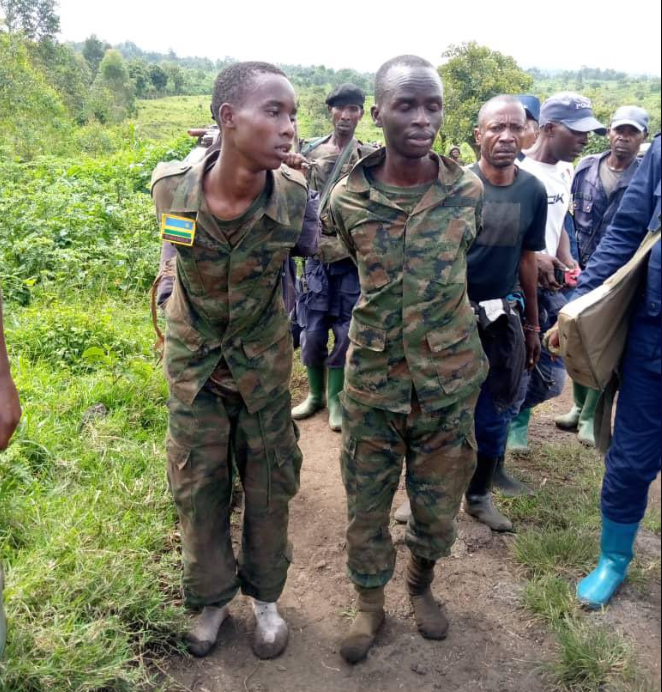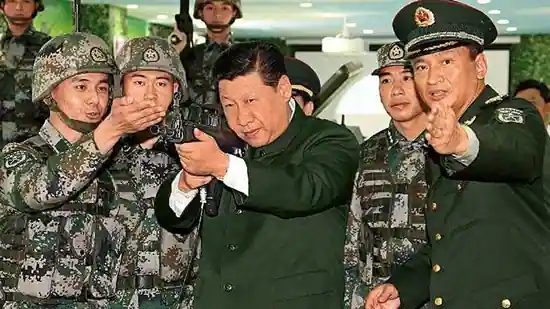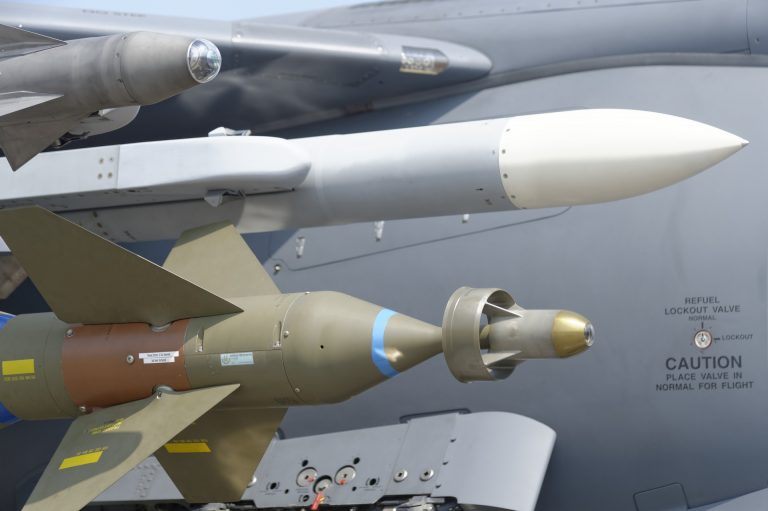United States Government (USG) has always considered Africa as a continent where it can impose regime change with ease. Its adventures with regime change in Iraq and Afghanistan have been disastrous, with USG being defeated in both nations and the new regimes refusing to show deference (to USG). In Africa, interventionist policymakers can advocate for regime change because they can exploit existing political competition. In most African nations, political competition can become violent if it is based on local-level identities such as tribe or clan (which is quite pronounced in Somalia), or broader-scale identities such as religion (e.g. Islam-Christian conflicts in Nigeria) or region (e.g. Ambazonia conflict in Cameroon).

For regime change advocates in USG, what they need is dedicated and motivated armed groups that are driven by sectarian and/or ethnonationalist ideologies. USG can work with these armed groups to execute regime change in targeted nations, which usually brings to power US-backed dictatorships that liberally commit human rights abuses. Should these US-backed dictatorial regimes fall and be replaced by democracies, then some of these advocates in USG can champion for foreign-imposed restoration regime change to re-impose the ousted US-backed party back to power. This form of regime change seeks to re-establish an unpopular minority government, which is kept in power by the barrel of the gun. The Horn of Africa is currently the target area for regime change operations. Formerly, such regime change operations in the Great Lakes region of Africa led to the death of about 8.5 million people.
USG-supported Regime Change by Tutsi Minority leads to Tyranny and Death of Millions
In 2019, a book written by Masako Yonekawa of Tsukuba Gakuin University in Tsukuba, Japan, was published. Its title is Post-Genocide Rwandan Refugees, and its more revealing subtitle is Why They Refuse to Return ‘Home’: Myths and Realities. Yonekawa explains that the Tutsi refugees expelled from Rwanda played a key role in ending democracy in both Uganda and Rwanda, and they achieved this with support from USG and GUK. The book records that this process began in 1982 following the expulsion of Tutsi refugees from Uganda, which caused these refugees to take up arms against Ugandans. These Tutsi refugees joined the National Resistance Army (NRA), the armed wing of the National Resistance Movement (NRM) which has been led by Yoweri Museveni. They fought against the Uganda People’s Congress (UPC), which had won the 1980 general elections and was led by Milton Obote (ibid). This war is known as the Uganda Bush War, and both warring sides committed atrocities. The World Peace Foundation reports that NRA dressed as Obote’s soldiers and killed Ugandan civilians so as to induce Ugandans to hate and take up arms against UPC, which had itself committed horrible human rights abuses and arbitrary killings.
These armed Tutsi helped Museveni topple the government of Milton Obote in January 1986, which was an effective regime change. Museveni, who is himself of Rwandan origin (though he disputes this) and whose father worked as a spy of Idi Amin’s oppressive government, took power in January 1986 and appointed many Tutsis to top government positions in Uganda, a fact that led to mass disquiet that forced him to remove most of these Tutsis from non-security-related state positions (Yonekawa, 2019).
According to Yonekawa, the Tutsi after realizing that their attempt to rule Uganda had failed, formed “an offensive political organization dedicated to” promoting “ethnocentric goals” (Yonekawa, 2019). This political organization is the Rwandan Patriotic Front (RPF) which was formed in December 1987. The RPF had an armed wing called the Rwandan Patriotic Army (RPA), which was falling in the late 1980s under the influence of a pro-war camp led by the then head of Military Intelligence of Uganda, Paul Kagame (Yonekawa, 2019).


Paul Kagame accurately realized that a Tutsi-dominated RPF could not win any competitive elections in Rwanda, and thus chose the path of armed struggle to restore Tutsi minority rule in Rwanda. To this end, Kagame would receive the support of Roger Winter, who headed the US Committee for Refugees (USCOR) (Yonekawa, 2019).
Winter, RPF, and America’s Man in the Great Lakes
In 1982, Roger Winter was expelled from Uganda for supporting the armed rebellion waged by Museveni against the Obote government. Then in 1983, Winter financed a Rwandan Tutsi named Alexandre Kimenyi to start a journal called Impuruza to serve as an ideological platform to promote Tutsi ethnonationalism. Later in August 1988 when meeting Tutsis in Washington D.C, Roger Winter openly told them (Tutsis) that they should start a war to execute regime change in Rwanda, and then rule Rwanda as a minority authoritarian government. In 1989, Winter used USCOR to facilitate this process of regime change, and he encouraged RPF to use the sectarian tribal divide to wage war in Rwanda. In 1990, Winter organized for Paul Kagame to be trained in the US and to be groomed by the State Department as “America’s Man in the Great Lakes” (Yonekawa, 2019).



The initial RPA invasion was defeated in 1990, but a renewed invasion backed by Yoweri Museveni allowed the RPA to capture territories in northern Rwanda and start displacing Hutu farmers to create space for resettling Tutsi herders (Yonekawa, 2019). This invasion would set the stage for the successful foreign-imposed regime changes in Rwanda and Burundi in 1994, and the mass killings that followed in Rwanda, and later in Zaire where RPF and NRM were joined by Ethiopia and Eritrea to topple the government of Mobutu Sese Seko. Interestingly, Mobutu was recruited by the Belgian intelligence service in 1957 when he worked as a journalist, and was then seconded to the Central Intelligence Agency (CIA) as an informer (Nzongola-Ntalaja, 2007).
Assassinations for Regime Change
In 1990, a joint program by the American Department of Justice (DoJ), C.I.A, US Customs Service, and the Department of Defense (DoD) started supplying arms to Museveni to stabilize his regime; and in 1991, this program started supplying arms to the RPF. This gave RPA the weapons it needed to invade Rwanda on October 1, 1990. The then US Assistant Secretary of State for African Affairs, Herman Cohen, voiced support for the Tutsi rebels, which was in line with Winter’s support for regime change in Rwanda.
On April 6, 1994, President Juvénal Habyarimana of Rwanda and President Cyprien Ntaryamira of Burundi were assassinated, and Rwanda fell into a 3-month period of intense bloodshed that allowed RPF to take power and establish a Tutsi-dominated minority rule that survives to date. There are claims that Tutsis, like the Mongol pastoralists, used the destruction of agricultural resources as a means to prevent their victims from recovering and fighting back.
The role of RPF and Paul Kagame in these assassinations has been debated (Yonekawa, 2019), and there are reports that 4 Presidents, not 2 Presidents were targeted for assassination by RPF.
Covert Action Magazine, quoting Tanzania’s intelligence agent, Major General Imran Kombe, reports that Paul Kagame planned to assassinate 3 presidents on the same day – President Joseph-Désiré Mobutu Sese Seko of Zaire, President Juvénal Habyarimana of Rwanda, and President Daniel Toroitich arap Moi of Kenya. The assassination was to take place if these 3 presidents attended the Arusha peace conference. This peace conference was a US-backed ploy for RPF to use peace negotiations to buy time for a military advance across Northern Rwanda, and in hindsight, Habyarimana should never have attended it.
For USG, the victory of RPF in Rwanda was an opportunity to showcase the utility of its chosen clique of “new generation” of African leaders who were leading the “African renaissance”. These leaders were Meles Zenawi, Yoweri Museveni, Paul Kagame, and Isaias Afewerki (Yonekawa, 2019). They were all militarily involved in the USG-supported foreign-imposed regime change in Zaire.
Bechtel, Halliburton, and Private Military Contractors help Kagame’s Invasion of Zaire
In November 1996, during the First Congo War, the US Air Force started delivering large quantities of arms and ammunition to Goma and Bukavu, which were then occupied by Rwandan Tutsi soldiers of the RPA. American soldiers even installed anti-aircraft artillery to protect camps where the US military was training RPA, who were expected to occupy Eastern Congo, in preparation for the collapse of Zaire and Rwanda’s annexation of this Congolese territory. The US government even helped RPA form a new administration in Goma by paying the salaries of RPA-appointed civil servants (Yonekawa, 2019).
Roger Winter, Peter Whaley, and Dennis Hawkins visited RPA in Goma and helped them plan how to fight and topple the Mobutu regime. CIA operatives also instructed RPA on the preferred pro-USG government to be installed after Mobutu is ousted. To support these regime change operations, Bechtel Corporation provided high-tech intelligence, including high-resolution satellite data and infrared images to RPA. Halliburton’s subsidiary, Brown & Root (now called Kellogg-Brown & Root or KBR, Incorporated), built the military base in Zaire where RPA soldiers were trained for forward deployment to oust Mobutu. RPA would work with the Alliance of Democratic Forces for the Liberation of Congo-Zaire (AFDL), which was led by Laurent Kabila, to execute a successful regime change to remove a leader the CIA wanted to be deposed (Yonekawa, 2019).
US Special Forces and Air Force help Tutsi Soldiers Kill Rwandan Hutu Refugees
US Special Forces were embedded in RPA and AFDL combat units. They were to work with 60 American private military contractors who were also embedded into RPA and AFDL. These contractors and special forces were tasked with ensuring that neither RPA nor AFDL would suffer catastrophic defeats in the battlefield, and they worked hand-in-glove with CIA and the US Air Force (Yonekawa, 2019). The mission in early 1997 had turned critical and under no circumstances was the Mobutu government to survive the foreign-imposed regime change, no matter the human or material cost.

Hutu militants chose to ally with Mobutu’s government. On the other hand, USG joined Rwanda in promoting a policy of refoulement i.e forced repatriation of Hutu refugees so as to deny Mobutu a demographic capital that could be armed to fend off RPF and NRM armed incursions into Zaire. Towards this effort, USG directed Orion surveillance airplanes and American satellites to track and locate Hutu refugees in Zaire (Yonekawa, 2019).
Additionally, USG used its air reconnaissance mission in Eastern Zaire to locate Hutu refugee camps and fleeing Hutu refugees, and then relayed this information to RPA via CIA-installed communication monitoring stations in Uganda and Rwanda (Yonekawa, 2019). To justify attacks on Hutu refugee camps, RPF staged “false flag” operations. According to Judi Rever in her book, In Praise of Blood: The Crimes of the Rwandan Patriotic Front, RPF attacked Tutsi refugees in Mudende refugee camp and killed hundreds of Tutsi refugees and then claimed that these refugees were killed by Hutu militants hosted in Zaire so as to justify demonization of Hutu refugees. This also served to provide justification for crimes being committed by the US Air Force in Zaire.
The French magazine, Valeurs Actuelles, reported that US Special Forces used C-130 gunships to strafe and kill Hutu refugees whom RPA could not reach. In November 1996, Alex de Waal, in a post titled No Bloodless Miracle, which was published by The Guardian, helped cement demonization of Hutu refugees in Zaire, an act which helped USG and United Kingdom to condemn all Hutu refugees in Zaire who avoided refoulement as “fugitives from justice” who deserve to be “targets of (military) opportunity” (Yonekawa, 2019).
USG directed Orion surveillance airplanes and American satellites to track and locate Hutu refugees in Zaire. Additionally, USG used its air reconnaissance mission in Eastern Zaire to locate Hutu refugee camps and fleeing Hutu refugees, and then relayed this information to RPA via CIA-installed communication monitoring stations in Uganda and Rwanda
Geopolitics Press
Samantha Power, Susan Rice, and Supporters of the Tutsi War in the Congo
USCOR had introduced RPF to the State Department as a tool for regime change in the Great Lakes region, and they would later be joined by Alex De Waal, Rakiya Omaar, Susan Rice, and Samantha Power in helping to execute a regime change in Rwanda and later justify invasion of Zaire by the joint armies of Yoweri Museveni, Paul Kagame, Meles Zenawi, and Isaias Afewerki, who were backed by the Sudanese People Liberation Army and Tutsi-dominated Burundian army. Eritrea even sent a full battalion to help the Tutsi-led invasion of Zaire. Zaire was supported by China, Israel, and Hutu militants who now rule Burundi.
Tutsi are claimed to have originated in Ethiopia, and the fact that Ethiopia and Eritrea helped Tutsi-dominated RPF to topple the Zairean government has created unease and hostility towards Ethiopia and Ethiopians in the Democratic Republic of Congo (DRC), the successor state of Zaire. To date, Egypt has exploited this fact to its advantage, even getting Congolese to work with Egypt in what is clearly a plan to make GERD unviable. Most importantly, Egypt can rally DRC and large sections of the Southern African Development Community (SADC) to support Egypt (instead of Ethiopia) by reminding them of the role Ethiopia and Eritrea played in causing mass suffering in the biggest SADC nation, the DRC. So far, Egypt has not indicated if it plans to attend the 42nd Ordinary Summit of SADC Heads of States that will be held in Kinshasa in August 2022.
RPF ignited the Second Congo War which had killed about 5.4 million Congolese between 1998 and January 2008, and hundreds of thousands of Congolese have died since 2008. In its report titled, Mortality in the Democratic Republic of Congo: An ongoing crisis, the International Rescue Committee (IRC) reported that about 3.9 million Congolese had died between 1998 and 2004, with most of the deaths occurring in Eastern DRC where mass starvation occurred following invasion of the region by armies led by RPF and NRM. Both Paul Kagame and Yoweri Museveni belong to nomadic pastoralist tribes, and this lends credence to claims that like Mongols, they pursued a policy of intentional destruction of agricultural resources as a means to prevent their victims from recovering and fighting back. IRC described the Second Congo War as the most brutal war in Africa. Still, USG supported RPF and NRM throughout this period even after RPF threatened Tanzania in 2013, which led to Tanzania’s military defeating RPF in Eastern Congo in November 2013.
The First Congo War that was ignited by RPF killed about 1 million people, while the civil wars ignited by the RPF invasion of Rwanda and the assassination of Burundi’s president killed over 1.5 million people. RPF has succeeded with Museveni’s and USG’s help to end the regimes of 3 presidents – Juvenal Habyarimana, Cyprien Ntaryamira, and Mobutu Sese Seko. In the process, the wars it ignited and participated in have killed over 8.5 million people.
RPF Model for TPLF and Kenya’s Intelligence Denounced by Tanzania
Alex De Waal and Rakiya Omaar created the genocide narrative which garnered “genocide credit” for the RPF. It was this genocide credit that was used by Susan Rice and Samantha Power to justify attempts to destroy DRC as a viable nation (Yonekawa, 2019). Is this RPF model now being considered for Ethiopia, with the TPLF being the substitute for RPF?
As an indication, Tigrayan activists have called on Paul Kagame of Rwanda to publicly support them and give credence to claims about a “Tigray Genocide”, though some Rwandans on Twitter just equated Kagame’s RPF to the TPLF.



Paul Kagame has called on the Biden Administration and the United Nations to join hands with the African Union to intervene in what he called a “worrying Ethiopian situation” because the death toll is getting too high and that Tigray “has been cut off from the rest of the world”.
Interestingly, C2FC has been working on getting Paul Kagame to lead the efforts of the East African Community (EAC) to push for a resolution of the Ethiopian crisis. So far, it has failed to bear fruits because Kagame’s Rwanda has fought all its neighbors, with Tanzania defeating him in 2013, and many in East Africa consider RPF as a GUK-USG outpost for destabilizing the Great Lakes region.
Another issue is that C2FC is known for meddling in Tanzania’s politics with the goal of fomenting regime change. In October 2020, the Government of Tanzania publicly accused Kenya’s National Intelligence Service (NIS) of working with anti-government activists to plot violence in Tanzania. The Government of Tanzania noted that “this has been organized by the Kenyan Intelligence Services with the aim of deeply penetrating into the Tanzanian electoral process and sowing divisions and unrest”.



At the moment, democracy activists like Zitto MwamiRuyagwa Kabwe – who is the party leader of Alliance for Change and Transparency Wazalendo (ACT-Wazalendo) – use Kenyan media platforms to praise TPLF and criticize CCM. On his Twitter page, Kabwe advocates for TPLF and writes hagiographical accounts of Meles Zenawi, as well as regularly shares tweets posted by known TPLF advocates such as Omna Tigray, Kjetil Tronvoll, Rashid Abdi, and Lord David Alton.
In November 2020, Zitto Kabwe – acting in his capacity as ACT-Wazalendo party leader – called on the African Union and the United Nations to intervene in the Ethiopian crisis so as “to protect the people of Tigray region, Ethiopia against their own government”. He also called on the Tanzanian government to sponsor resolutions at the UN and AU to authorize “timely intervention in Ethiopia in order to protect Tigray people” so that “Africa should not see another Rwanda again…in the aftermath of the atrocities committed in the Balkans and in Rwanda in the 1990s” (ibid). Moreover, Kabwe criticized what he described as ethnic profiling that bordered on “Genocide against Tigray ethnic group” and called on the UN to invoke the “principle of the responsibility to protect” because “military forces have waged a war against its citizens from the Tigray regional state” (ibid).
(The Citizen [Tanzania] is owned by the Kenyan media conglomerate, Nation Media Group, whose Daily Nation’s Breaking News Twitter handle announced that TPLF and OLA had been in talks for 6 weeks).
C2FC will continue to use democracy activists, intellectuals, and corporate media to promote the genocide narrative and call for regime change. Alex de Waal, Susan Rice, Samantha Power, and the State Department will try to replicate the disastrous regime change operations in the Great Lakes region, but this time, their targeted region is the Horn of Africa.
At the moment, Abiy’s Ethiopia is being equated to Juvenal’s Rwanda by the elite corporate media, and TPLF has been turned into the RPF of the Horn of Africa region. How the Tigray crisis plays out is dependent on how the involved parties settle the conflict, but the horrors that befell the Great Lakes region should be averted in the Horn of Africa region.
DRC still survives as a viable nation-state and Kagame’s RPF is concerned about its survival, while the Tutsi dictator of Burundi, Pierre Buyoya, has been buried in Bamako, Mali.
References
Nzongola-Ntalaja, G. (2013). The Congo from Leopold to Kabila: A People’s History. Bloomsbury Publishing.
Rever, J. (2020). In Praise of Blood: The Crimes of the Rwandan Patriotic Front. Vintage Canada.
Yonekawa, M. (2019). Post-Genocide Rwandan Refugees. Springer Verlag, Singapore.








For Ethiopians, sovereignty means respect, freedom, national benefit, security, and rights. No one can interfere or decided on Ethiopia’s sovereignty. What Ethiopian’s have learned from the heroic Adwa victory, is to defend sovereignty by standing together.
This has nothing to do with economy or democracy…this is the western power plus Arabs, plus tigray ppl plus oromo Vs Amara ppl. This is a holy war. Ya ain’t getting no arc of the covenant, no holy cross or none of ya freemason plan. The world will see who the Ethiopian are. Ya goina against the holy church lls… Ya old strategies of getting oia war is done…take ya seven heads out g7